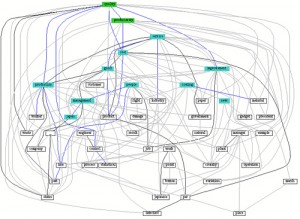
Offering a product or service that customers want to buy repeatedly is a big deal. It’s ideal when your customers don’t have to remember to send payments for every additional product purchased or month of service. Setting up recurring payments gives you the option of selling products or services automatically. It optimizes the checkout experience and makes it much easier to predict the cash flow.
In short, recurring payments are repeated ones. It’s when you are charged automatically for items or services that are delivered to you on a regular basis. It could be for any period of time depending on the business model. The process needs to be initiated by an initial sale or card authorization and it can look like the following:
- The customer selects the recurring payment option on your website.
- Customer needs to accept the terms and conditions and wait for an authorization.
- The customer then needs to enter their card information and confirm the payments. From now on the customer will be charged automatically for a certain period or until they cancel the subscription
See it as an example:
You’re a fan of fresh flowers so you decide to buy them every week to make your home cozy. You’d rather buy the flowers on the internet and, luckily, you’ve found an online shop that will deliver them every week. You just need to choose the recurring payment option and initiate the first purchase. From now, you will be charged automatically every week and the flowers will be delivered right to your house, until you decide to cancel the subscription.
Easy, right?
Available payment schedules
There are few types of payment schedules which are based on a required number of payments or a certain period. The first one is when there is a limited number of payments that are charged at regular intervals. The second is when the number of payments is unlimited and a customer can cancel the subscription any time he or she wants. Another payment schedule is when a limited number of payments change to unlimited ones after a certain period.
When choosing recurring payments, it’s up to you how your customers will be charged. You can easily customize the payment frequency, amount, and currency. You can also offer a free trial so customers can make a well-thought out decision before they start to pay for the product.
All the credit card information is securely stored so you and your customers don’t have to worry about it.
What are the benefits of recurring payments?
Setting up recurring payments can boost your sales when you run a business with SaaS products, membership fees, or offer so-called subscription boxes. It helps to minimize your customer’s effort and get your cash flow under control.
The following are benefits of subscription payments:
- Merchants can be certain they will receive payments on time. You will be able to predict the cash flow so it’s easier to manage the business and make plans for the future.
- There’s an option to set up a free trial so your customers can make better decisions about using your product or service.
- It’s convenient and time-saving for both you and your customers.
- It’s easier to build strong and lasting relations with customers. It can lead to higher customer lifetime value. The customer journey is longer than for a one-time purchase.
- Your customers can subscribe to multiple plans at one time, boosting conversion and improving your business performance.
- You have time to focus on your business.
With recurring payments, you can accept credit and debit card payments for any type of content site subscription. Mostly, it’s worth selling cheaper products with the maximum amount being between 20 and 25 dollars.
The subscription model works great for large merchants as well as businesses with a highly differentiated product. Recurring payments are a game changer. You just need to think about what would work best for your customers.
Do you have any questions about recurring payments?
Digital & Social Articles on Business 2 Community(99)
Report Post






